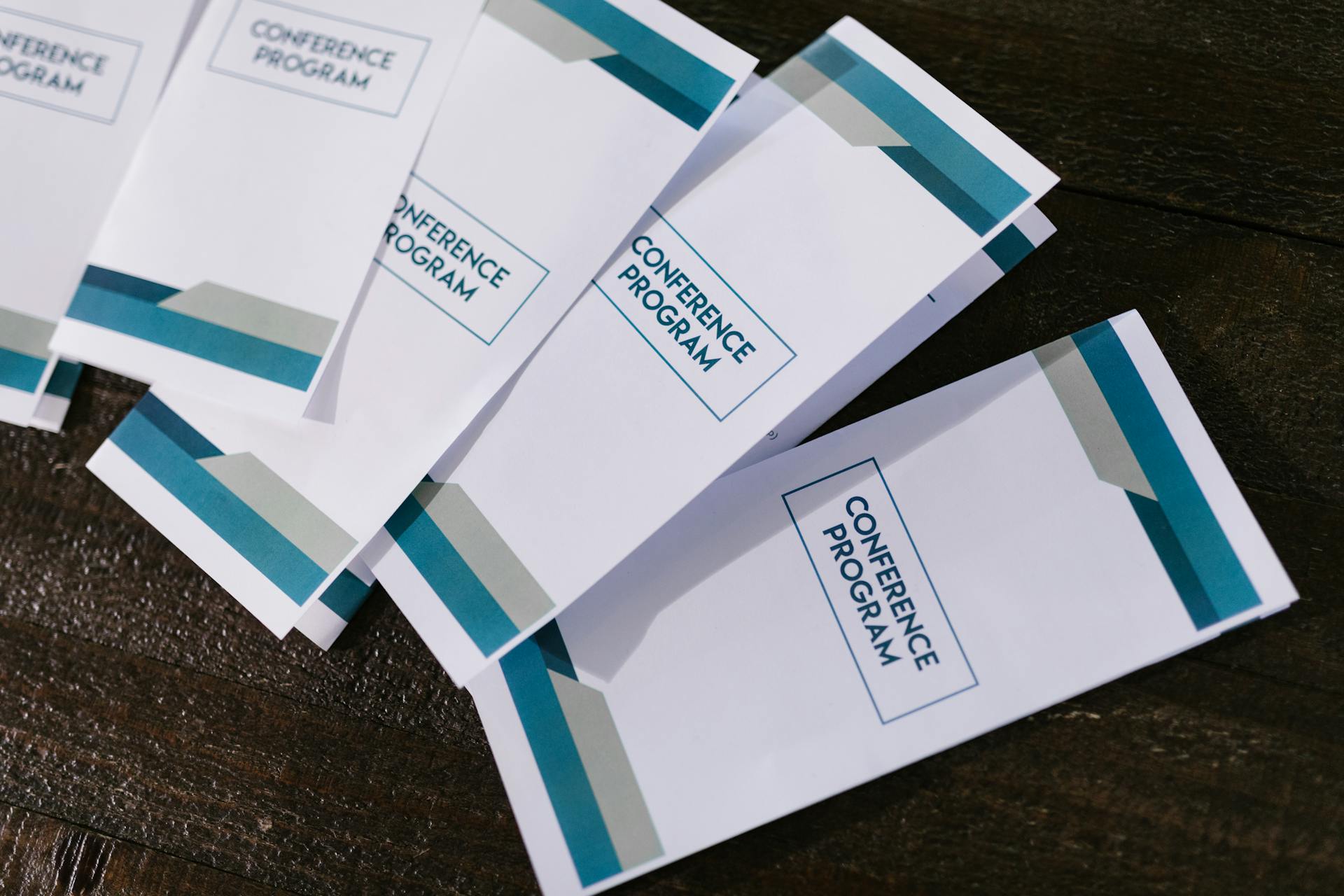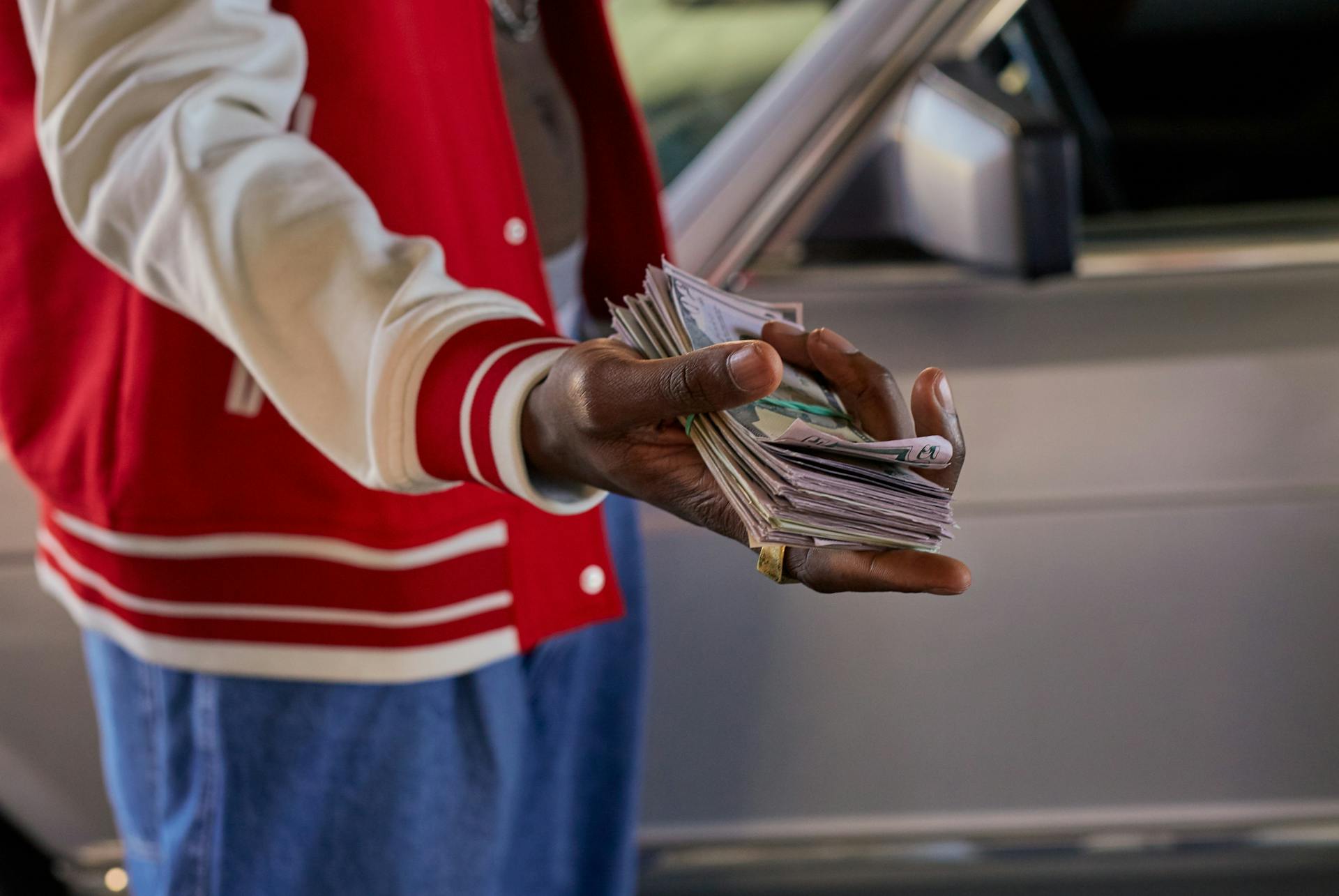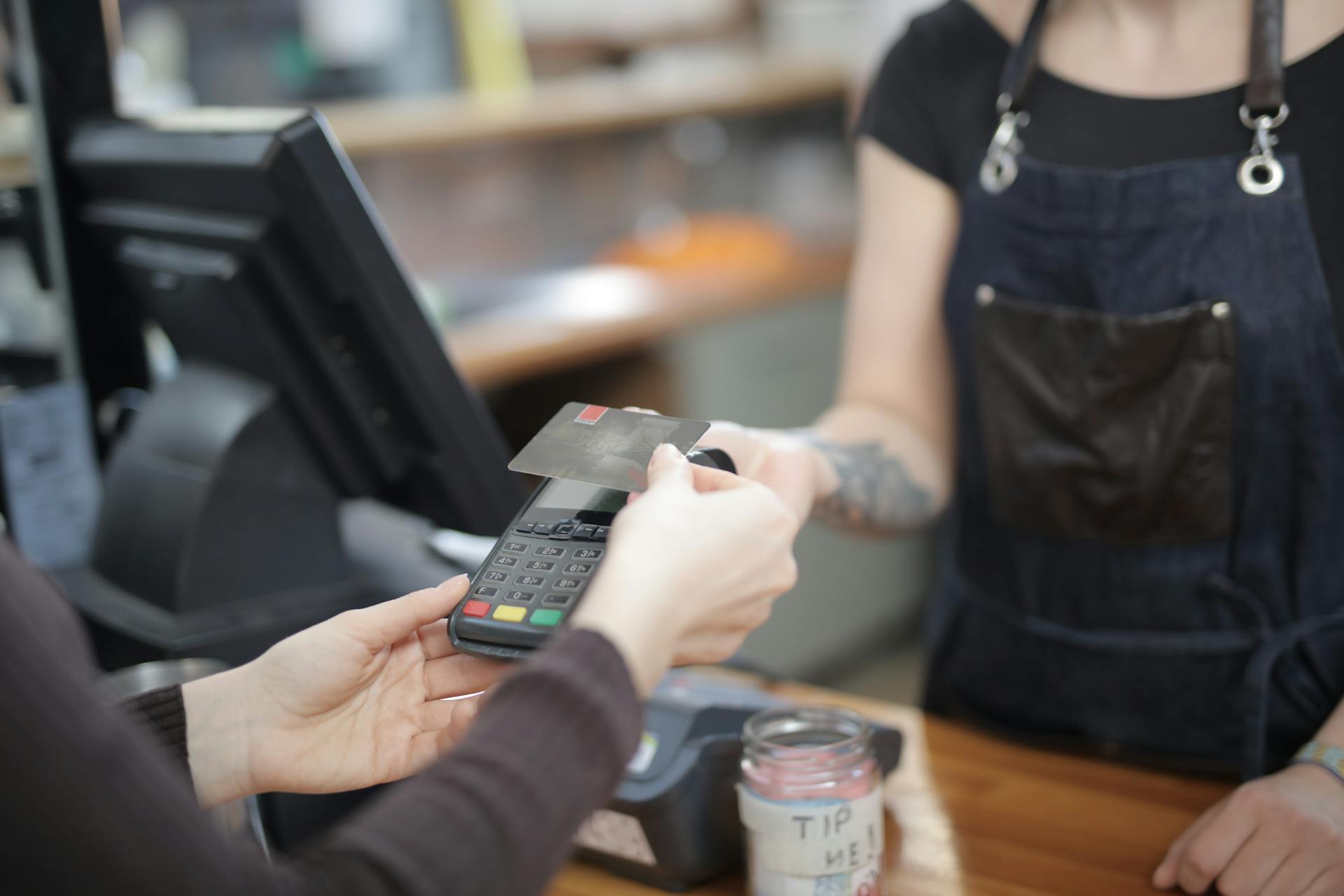
Cashback reward programs are a great way to earn money back on your purchases, and they're more popular than ever. Many credit cards, apps, and websites offer cashback rewards, making it easy to earn cash back on your daily expenses.
The percentage of cashback rewards varies widely, from 1% to 5% or even more in some cases. For example, the American Express Blue Cash Preferred card offers 6% cashback on groceries.
You can earn cashback rewards on a wide range of purchases, including groceries, gas, travel, and even online shopping. Some programs offer higher rewards on specific categories, like 3% cashback on dining purchases.
Cashback rewards can be redeemed in various ways, such as statement credits, direct deposits, or even gift cards.
Expand your knowledge: Credit Cards to Earn Airline Miles
What Is a Cashback Reward Program?
A cashback reward program is a type of loyalty program where customers receive a percentage of their purchases as cash rewards. This can be a great way to earn some extra money back on everyday purchases.
Customers can earn cashback rewards by making qualifying purchases, which means they need to meet certain conditions set by the program. These conditions can vary depending on the program.
Cashback rewards can be redeemed for future purchases, converted into gift cards, or transferred to the customer's bank account or loyalty wallet. This flexibility makes it easy for customers to use their rewards in a way that suits them.
Cashback rewards are commonly associated with credit cards, where credit card companies provide customers with a certain percentage of their spending back.
Benefits for Consumers
Cashback rewards programs are easy for customers to understand and use, making them a great option for consumers. They offer a simple and straightforward way to earn rewards, with no confusing rubric to navigate.
Cashback rewards meet three key criteria for making consumers happy: they are rewarding, relevant, and effortless. This is especially important in times of rising prices, when consumers are looking for ways to offset increased costs.
In fact, 90% of consumers report that current inflation is causing them to seek cashback rewards and discounts when they shop online. This shows just how important cashback rewards are to consumers.
Even small cashback rewards can add up over time. For example, earning 1 to 3% cash back on purchases can really make a difference in the long run. And, as we'll see, the time spent earning rewards is often worth it.
Here's a rough calculation to illustrate this point: if you spend €70 a week at the grocer, 52 weeks a year, and take 15 seconds each time to swipe your loyalty card, you'll earn around €36.40 in cashback rewards. That's equivalent to earning around €0.046 per second spent, which is a pretty good return on investment.
To put this in perspective, the average workday is around 8.5 hours, or 30,600 seconds. So, if you earn around €0.046 per second, that's equivalent to earning around €1,400 per year. Not bad for a few seconds of effort each week!
For your interest: Do I Earn Play Points for Using Google Pay
Types of Programs
There are several types of cashback reward programs to consider.
App-based programs, like Dosh and Ibotta, offer cashback rewards for shopping through their platforms. These apps partner with multiple retailers to provide users with cashback on their purchases.
Some credit cards offer higher cashback percentages on certain types of purchases, known as tiered-rate cash back cards. For example, the Blue Cash Everyday Card from American Express offers 3 percent cash back at U.S. supermarkets, gas stations, and online retail purchases.
Other cards allow you to choose your own bonus cash back category, like the Bank of America Customized Cash Rewards credit card. This card lets you select one of several rewards categories to earn 3 percent cash back, such as gas, online shopping, dining, or travel.
Here are some examples of categories offered by the Bank of America Customized Cash Rewards credit card:
- Gas (and electric vehicle charging stations)
- Online shopping (plus cable, streaming, internet and phone services)
- Dining
- Travel
- Drugstores
- Home improvement
- Furnishing purchases
The Citi Custom Cash Card takes a different approach, offering 5 percent cash back on your top spending category each billing cycle, and unlimited 1 percent on all other purchases.
What Is a Category?

A category is a specific type of purchase that earns a higher cashback reward rate than the standard rate.
These categories often come with limits on how much you can earn in a given period.
For example, with the Discover it Cash Back Credit Card or Student Cash Back Card, you can earn 5% cash back on everyday purchases at different places you shop each quarter.
You'll earn 1% cash back on all your other purchases automatically, with no maximum or activation needed.
It's worth noting that these bonus categories can change each quarter, so you may need to activate them each time to take advantage of the higher reward rate.
Flat-Rate
Flat-rate programs offer a straightforward approach to earning rewards. They provide a consistent cash back percentage on every qualifying purchase, making it easy to understand and track your rewards.
The Wells Fargo Active Cash Card offers a flat 2% cash back rate on all purchases, which is a great option for those who want a high rewards rate without the hassle of tracking different categories.
A more common flat-rate amount is 1.5 percent on your purchases, which is what the Capital One Quicksilver Cash Rewards Credit Card offers. This means you'll earn $15 in cash back for every $1,000 spent.
One of the advantages of flat-rate cards is their simple earning structure, making it easy to understand how much you'll earn.
Flat-rate cards often come with no annual fee, which can save you money in the long run.
However, flat-rate cards can be slow to accumulate rewards, especially if you're not spending a lot.
For more insights, see: Credit One Bank Rewards
Choose-Your-Own-Category
Choose-Your-Own-Category cash back cards are a type of rewards program that lets you choose your own bonus cash back category.
These cards typically offer a boosted rate in a few select categories and 1 percent cash back on general purchases. With the Bank of America Customized Cash Rewards credit card, you can choose one of several rewards categories in which to earn 3 percent cash back.
For another approach, see: Money Cash - Play Games & Earn

Some popular categories include gas, online shopping, dining, travel, drugstores, home improvement, and furnishing purchases. You can change your selection once per calendar month.
The Citi Custom Cash Card takes the manual selection process out of the equation with an automatically optimized rewards system. You'll earn 5 percent cash back on your top spending category each billing cycle and unlimited 1 percent on all other purchases.
The categories eligible for 5 percent cash back include restaurants, gas stations, grocery stores, select travel, select transit, select streaming services, drugstores, home improvement stores, fitness clubs, and live entertainment.
Here are some examples of choose-your-own-category cash back cards:
How to Create and Manage a Program
To create a cashback rewards program, you need to have a dedicated resource on your team who will effectively be the program's product owner. This person will be responsible for ensuring the program's success and making sure it's properly positioned to customers.
A cashback rewards program should have clear goals and performance metrics, with regular reporting on results versus these goals. Without this, the program may be orphaned in the organization and only receive attention when it's not performing as expected.
The cashback percentage, qualifying purchase criteria, and any limitations or restrictions should be clearly defined. Customers should also know how to redeem their cashback rewards, whether as loyalty points, direct bank transfers, gift cards, or other forms of value.
Implementing software to collect purchase and customer data and calculate cashback amounts accurately is crucial. Partnering with a loyalty management software that can handle cashback rewards can make the process much easier.
Marketing support is also essential to communicate about your cashback bonus. This includes determining key messaging and benefits, making it a key feature, knowing what channels to share the new program with customers, and creating an outreach campaign with multiple touch points.
To ensure the success of your cashback rewards program, you should have a clear plan for how to drive usage of the program and monitor the results of your marketing efforts. This will help you understand what's working and what areas need improvement.
Broaden your view: Loyalty Program
Here are the key steps to create a cashback rewards program:
- Determine what you aim to achieve with the program
- Decide on the cashback percentage, qualifying purchase criteria, and any limitations or restrictions
- Determine how customers can redeem their cashback rewards
- Implement software to collect purchase and customer data and calculate cashback amounts accurately
- Plan marketing support to communicate about your cashback bonus
- Monitor the results of your marketing efforts and adjust your strategy as needed
Program Structure and Limitations
In a cashback reward program, you can earn cashback on every purchase, with no limit on the overall amount you can earn. However, individual promotions may include a cap on the additional cashback bonus.
There's no limit to how much cashback you can earn in general, and your rewards never expire. You can redeem any amount, any time. This means you can continue to earn cashback without worrying about reaching a cap.
A well-structured program should consider factors like transparency, simplicity, and competitive cashback offers. This will help you attract and retain customers. For example, if you offer a flat percentage on all purchases, you might consider setting a cap on the rewards to avoid overwhelming customers.
A different take: No Cap Cashback Credit Card
Cons of Flat-Rate
Flat-rate cash back cards may not be the best option for everyone. They can be slow to accumulate rewards, which can be frustrating if you're not careful.
A common complaint about flat-rate cards is that they make it easy to forget rewards with their hands-off structure. This can lead to missed opportunities for higher rewards in various spending categories.
If you're not careful, you might find yourself earning a lower percentage of cash back than you could be. For example, the Wells Fargo Active Cash Card offers a flat 2% cash back rate, but it's not uncommon for other cards to offer higher rates in specific categories.
Here are some of the cons of flat-rate cards:
- Slow to accumulate rewards
- Miss out on higher rewards in various spending categories
- Can make it easy to forget rewards with their hands-off structure
Even if you max out your earning in a bonus category, you'll still earn a lower percentage of cash back on other purchases. For instance, if you earn 3% cash back on groceries, you'll still earn 1% cash back on all other purchases.
Cons of Tiered-Rate
Tiered-rate cards can be restrictive, especially when it comes to spending limits. They often have spending caps in top categories, which can be frustrating if you tend to overspend in those areas.
One of the biggest drawbacks is being locked into the issuer-chosen categories, which can be inflexible and not tailored to your individual spending habits.
Here are some specific cons to consider:
- Spending caps in top categories
- Locked into the issuer-chosen categories
This can make it difficult to maximize your rewards, especially if you have specific spending habits or preferences.
Set Reward Structure
Setting the right reward structure is crucial for a cashback rewards program. It's like deciding how much of a discount to give customers - too little and they won't be motivated, too much and it might be unsustainable.
The amount of cashback offered can vary greatly. For example, some credit cards offer a flat rate of 1.5% cash back on all purchases, while others offer higher percentages for specific categories like travel or dining. The Wells Fargo Active Cash Card offers a flat rate of 2% cash back on all purchases.
Flat-rate cards are great because they're simple and consistent, but tiered-rate cards can offer higher rewards in common spending categories. The Discover it Gas & Restaurants Card, Student Gas & Restaurants Card, or Secured Card, for example, offer 2% cash back at gas stations and restaurants on up to $1,000 in combined purchases each quarter.
Readers also liked: 2 Cashback Debit Card
To give you a better idea, here's a breakdown of some common cashback rates:
Remember, the key is to find a balance between rewarding customers and keeping the program sustainable.
Earning Limits
There's no limit on the overall amount of Cashback Bonus you can earn.
Individual promotions may include a cap on the additional Cashback Bonus you can earn, but this is not a hard limit on the overall amount.
You always earn Cashback Bonus on every purchase, and your rewards never expire, so you can redeem any amount, any time.
Some cashback programs may have a spending cap in top categories, as seen in tiered-rate cards, which can limit your earning potential.
Related reading: Chase Sapphire Preferred 10 Anniversary Bonus
Frequently Asked Questions
Is cashback real money?
Yes, cashback is real money that you can earn on eligible purchases with a credit card, redeemable as a refund or statement credit. It's a tangible reward for using your credit card, not just a promotional offer.
Is cash back rewards free money?
Cash back rewards are not entirely free money, as they often come with limits and fees associated with the card or issuer. However, they can still provide a valuable refund on your purchases.
Sources
- https://www.loyal.guru/offers/cashback-reward-program/
- https://www.discover.com/credit-cards/card-smarts/using-cashback-bonus/
- https://optculture.com/blogs/post/cashback-rewards-program-tips-and-best-practices/
- https://www.piggy.eu/en/glossary/cashback-reward-program
- https://www.bankrate.com/credit-cards/cash-back/how-cash-back-works/
Featured Images: pexels.com


